-
 Bitcoin
Bitcoin $85,620.5431
0.86% -
 Ethereum
Ethereum $1,897.3122
-0.11% -
 Tether USDt
Tether USDt $1.0002
0.02% -
 XRP
XRP $2.1269
0.07% -
 BNB
BNB $601.9446
-1.02% -
 Solana
Solana $129.2221
2.97% -
 USDC
USDC $0.9999
-0.01% -
 Dogecoin
Dogecoin $0.1725
0.66% -
 Cardano
Cardano $0.6822
1.06% -
 TRON
TRON $0.2380
0.58% -
 Toncoin
Toncoin $3.9628
-1.77% -
 Chainlink
Chainlink $13.8245
-1.78% -
 UNUS SED LEO
UNUS SED LEO $9.4229
0.68% -
 Stellar
Stellar $0.2688
-1.15% -
 Sui
Sui $2.4659
2.25% -
 Avalanche
Avalanche $19.2191
-0.67% -
 Shiba Inu
Shiba Inu $0.0...01259
-0.08% -
 Hedera
Hedera $0.1738
2.43% -
 Litecoin
Litecoin $85.8036
1.94% -
 Polkadot
Polkadot $4.1113
-0.65% -
 MANTRA
MANTRA $6.4509
2.66% -
 Bitcoin Cash
Bitcoin Cash $307.3141
-0.43% -
 Bitget Token
Bitget Token $4.5887
-0.44% -
 Dai
Dai $0.9996
-0.05% -
 Ethena USDe
Ethena USDe $0.9999
0.00% -
 Pi
Pi $0.6755
-4.64% -
 Hyperliquid
Hyperliquid $13.5037
1.72% -
 Monero
Monero $220.7326
1.83% -
 Uniswap
Uniswap $6.2125
-0.90% -
 Aptos
Aptos $5.3963
0.94%
What does Mint mean to NFT players?
Minting an NFT involves creating a unique digital asset on a blockchain, often requiring gas fees and using smart contracts to ensure ownership and authenticity.
Mar 31, 2025 at 06:56 am
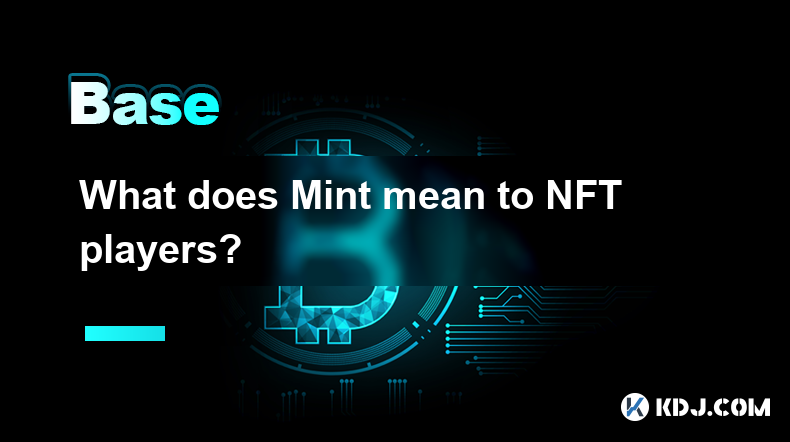
Understanding the "Mint" Process in the NFT World
For NFT players, "minting" refers to the process of creating a new, unique NFT and adding it to a blockchain. This isn't simply copying an image; it involves registering the digital asset's ownership and metadata onto the blockchain, making it verifiable and tamper-proof. Think of it as officially bringing a digital artwork, collectible, or in-game item into existence on the blockchain. The minting process typically involves using a smart contract on a specific blockchain network.
Different Ways to Mint NFTs
There are several ways to mint NFTs, each with its own implications:
Using a marketplace: Platforms like OpenSea, Rarible, and others provide user-friendly interfaces to create and list your NFTs. This often involves paying a gas fee (transaction fee) to the blockchain network. The marketplace handles the technical aspects of minting.
Using a dedicated minting tool: Some platforms specialize solely in minting NFTs, offering more control and potentially lower fees than general marketplaces. These tools often integrate with various blockchains.
Creating your own smart contract: For advanced users, creating a custom smart contract allows for complete control over the minting process and the NFT's attributes. This is complex and requires programming skills.
Using a minting service: Several services simplify the process by handling the technical complexities of minting on behalf of users. They often charge a fee for their services.
Understanding Minting Costs
The cost of minting an NFT varies significantly depending on several factors:
Blockchain network: Networks like Ethereum typically have higher gas fees than others like Solana or Polygon. The network's congestion also plays a significant role.
NFT complexity: More complex NFTs with larger file sizes and more metadata require more computational power, increasing minting costs.
Minting platform: Different platforms charge varying fees for their services, impacting the overall cost.
Market demand: High demand for minting slots on a particular platform can drive up prices.
The Role of Smart Contracts in Minting
Smart contracts are crucial to the minting process. They are self-executing contracts with the terms of the agreement between buyer and seller directly written into code. When an NFT is minted, the smart contract verifies the transaction, records the ownership on the blockchain, and ensures the NFT's unique properties are correctly registered. This automation is what makes NFTs secure and transparent.
Pre-Minting and Public Minting
Before an NFT collection is available to the public, there's often a pre-mint phase. This allows creators, early investors, or whitelist members to acquire NFTs at a potentially lower price before the public sale. This helps generate initial hype and community around the project. The public mint is when the NFTs become available for purchase by the general public.
Minting and Royalties
Many NFT creators incorporate royalties into their smart contracts. Royalties are a percentage of each subsequent sale of the NFT that goes back to the original creator. This provides ongoing revenue for the artist even after the initial sale. The percentage and payment method are defined within the smart contract during minting.
Gas Fees Explained
Gas fees are transaction fees paid to the miners or validators of the blockchain network for processing transactions. These fees are essential for securing the network and incentivizing participation. Higher gas fees usually correlate with increased network congestion, meaning more transactions are being processed simultaneously.
Choosing the Right Blockchain for Minting
The choice of blockchain for minting significantly impacts costs and functionality. Ethereum remains the most popular but can be expensive. Other blockchains offer lower fees and faster transaction speeds, but may have smaller communities or less established ecosystems. The optimal choice depends on the project's specific needs and priorities.
Metadata and NFT Attributes
Metadata is essential data associated with an NFT, including its name, description, image, and other attributes. This metadata is stored on the blockchain and defines the NFT's unique characteristics. It's crucial to ensure accurate and complete metadata during the minting process, as this information is publicly accessible and integral to the NFT's value.
The Importance of Verification and Authenticity
Minting an NFT on a blockchain provides a verifiable record of ownership and authenticity. This is a key differentiator from simply having a digital file. The immutability of the blockchain ensures that the NFT's ownership history cannot be altered or forged, contributing to its value and collectibility.
Risks and Considerations When Minting
While minting NFTs can be lucrative, there are risks to consider:
- Gas fees: Unexpectedly high gas fees can eat into profits.
- Market volatility: The value of NFTs can fluctuate significantly.
- Scams and fraud: Be wary of fraudulent projects and platforms.
- Technical complexities: Minting can involve technical challenges for less experienced users.
Frequently Asked Questions
Q: What is the difference between minting and buying an NFT?
A: Minting is the process of creating a new NFT and adding it to the blockchain. Buying an NFT involves purchasing an existing NFT from a marketplace or another owner.
Q: Can I mint an NFT for free?
A: No, minting almost always involves paying gas fees to the blockchain network. While some platforms might offer subsidized minting, the underlying network fees still need to be covered.
Q: What happens if I make a mistake during the minting process?
A: Depending on the nature of the mistake, it might be possible to correct it, but this can be complex and may incur additional costs. Careful planning and verification are crucial before minting.
Q: Are all NFTs minted on Ethereum?
A: No, NFTs can be minted on various blockchains, each with its own advantages and disadvantages in terms of cost, speed, and functionality.
Q: What is the best blockchain for minting NFTs?
A: There is no single "best" blockchain. The optimal choice depends on factors like cost, speed, community size, and the specific needs of the project.
Disclaimer:info@kdj.com
The information provided is not trading advice. kdj.com does not assume any responsibility for any investments made based on the information provided in this article. Cryptocurrencies are highly volatile and it is highly recommended that you invest with caution after thorough research!
If you believe that the content used on this website infringes your copyright, please contact us immediately (info@kdj.com) and we will delete it promptly.
- DoubleZero Protocol Launches Validator Funding Round, Targeting Existing Solana, Celestia, Sui, Aptos, and Avalanche Validators
- 2025-04-03 05:05:12
- This Classic Chart Pattern Could Send SUI Price Soaring: Expert Reveals the Key Level
- 2025-04-03 05:05:12
- Bitcoin Pepe (BPEP) is rewriting the rules of DeFi
- 2025-04-03 05:00:14
- The NFT marketplace X2Y2 is indeed scheduled to shut down its operations on April 30, 2025
- 2025-04-03 05:00:14
- Bitcoin's History During Market Turmoil Does Not Necessarily Encourage Its Chances of Success This Time
- 2025-04-03 04:55:12
- Bitcoin (BTC) price rallies by 5.53% as spot bids drive the market's bullish start to Q2
- 2025-04-03 04:55:12
Related knowledge
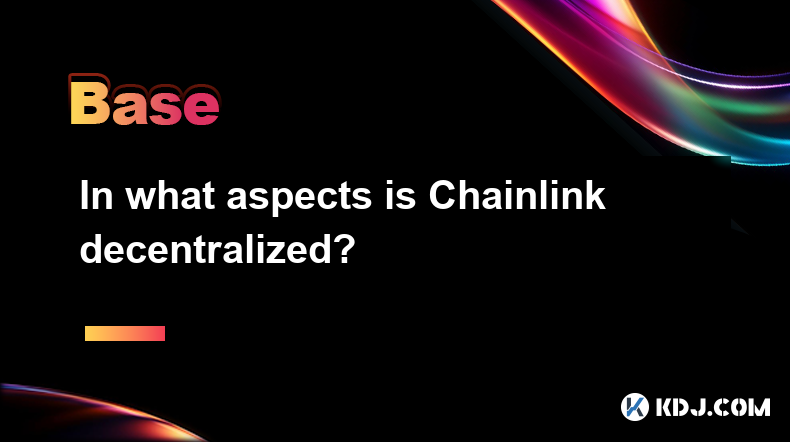
In what aspects is Chainlink decentralized?
Apr 02,2025 at 05:49pm
Chainlink is a decentralized oracle network that plays a crucial role in connecting smart contracts on blockchain networks with real-world data. Its decentralization is reflected in multiple aspects, ensuring the network's security, reliability, and integrity. This article delves into the various ways Chainlink achieves decentralization, including its n...
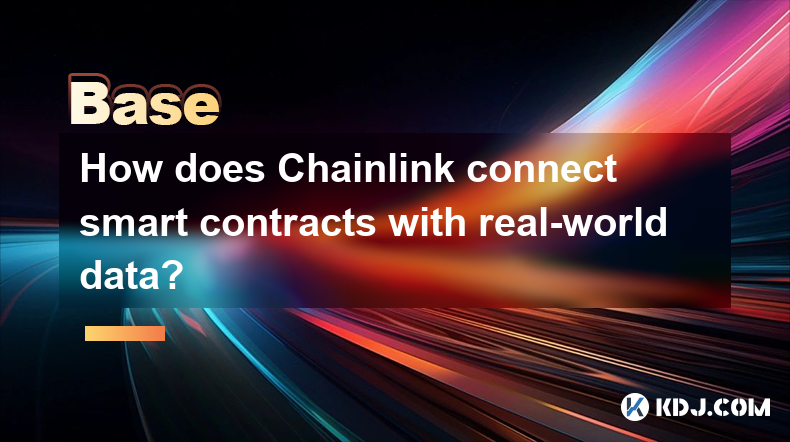
How does Chainlink connect smart contracts with real-world data?
Apr 02,2025 at 03:56pm
Chainlink is a decentralized oracle network that plays a crucial role in connecting smart contracts on blockchain platforms with real-world data. Smart contracts are self-executing contracts with the terms of the agreement directly written into code, but they can only interact with on-chain data. To access real-world data, such as stock prices, weather ...
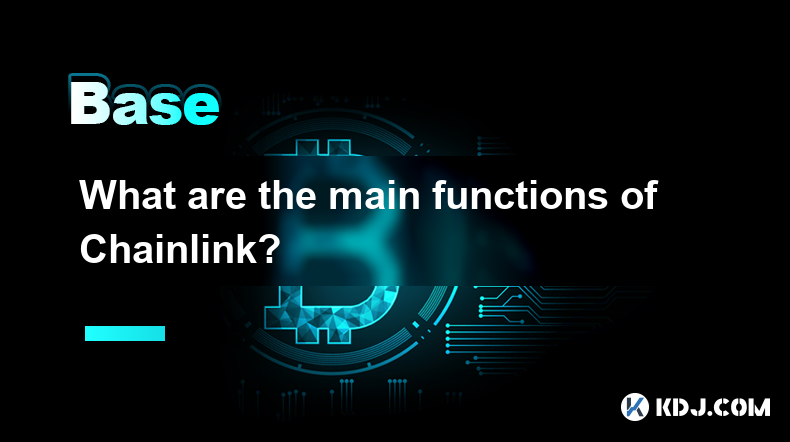
What are the main functions of Chainlink?
Apr 02,2025 at 11:49pm
Chainlink is a decentralized oracle network that plays a crucial role in connecting smart contracts with real-world data and external APIs. The primary function of Chainlink is to facilitate the seamless integration of off-chain data into on-chain smart contracts, enabling them to execute based on real-world events and information. This integration is v...

How does Chainlink work?
Apr 03,2025 at 01:50am
Chainlink is a decentralized oracle network that connects smart contracts with real-world data and external APIs. It plays a crucial role in the blockchain ecosystem by enabling smart contracts to interact with data outside their native blockchain environment. This connectivity is essential for smart contracts to execute based on real-world events and d...
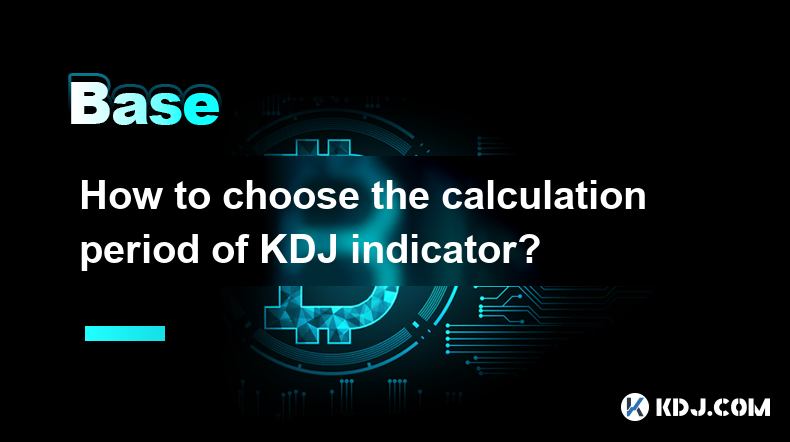
How to choose the calculation period of KDJ indicator?
Apr 02,2025 at 01:00pm
The KDJ indicator, also known as the Stochastic Oscillator, is a popular technical analysis tool used by cryptocurrency traders to identify potential buy and sell signals. The calculation period of the KDJ indicator is crucial in determining its effectiveness in predicting market trends. In this article, we will explore the factors to consider when choo...
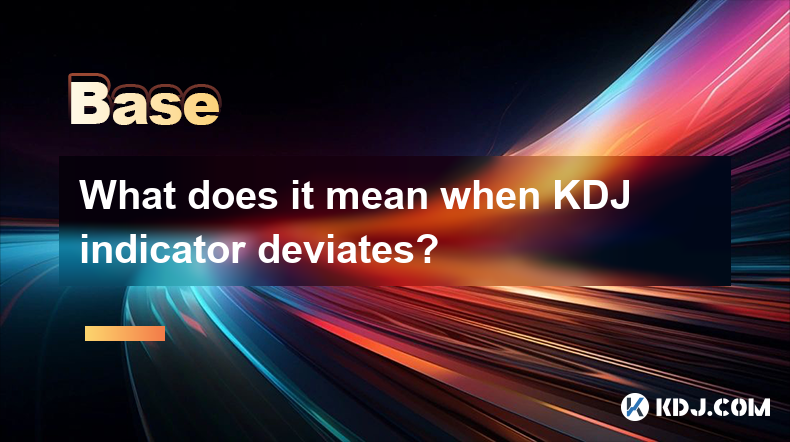
What does it mean when KDJ indicator deviates?
Apr 01,2025 at 03:08pm
The KDJ indicator, also known as the Stochastic Oscillator, is a popular technical analysis tool used in the cryptocurrency market to predict price movements. When the KDJ indicator deviates, it means that the current price of a cryptocurrency is moving away from its typical range, as indicated by the KDJ lines. This deviation can signal potential trend...

In what aspects is Chainlink decentralized?
Apr 02,2025 at 05:49pm
Chainlink is a decentralized oracle network that plays a crucial role in connecting smart contracts on blockchain networks with real-world data. Its decentralization is reflected in multiple aspects, ensuring the network's security, reliability, and integrity. This article delves into the various ways Chainlink achieves decentralization, including its n...

How does Chainlink connect smart contracts with real-world data?
Apr 02,2025 at 03:56pm
Chainlink is a decentralized oracle network that plays a crucial role in connecting smart contracts on blockchain platforms with real-world data. Smart contracts are self-executing contracts with the terms of the agreement directly written into code, but they can only interact with on-chain data. To access real-world data, such as stock prices, weather ...

What are the main functions of Chainlink?
Apr 02,2025 at 11:49pm
Chainlink is a decentralized oracle network that plays a crucial role in connecting smart contracts with real-world data and external APIs. The primary function of Chainlink is to facilitate the seamless integration of off-chain data into on-chain smart contracts, enabling them to execute based on real-world events and information. This integration is v...

How does Chainlink work?
Apr 03,2025 at 01:50am
Chainlink is a decentralized oracle network that connects smart contracts with real-world data and external APIs. It plays a crucial role in the blockchain ecosystem by enabling smart contracts to interact with data outside their native blockchain environment. This connectivity is essential for smart contracts to execute based on real-world events and d...

How to choose the calculation period of KDJ indicator?
Apr 02,2025 at 01:00pm
The KDJ indicator, also known as the Stochastic Oscillator, is a popular technical analysis tool used by cryptocurrency traders to identify potential buy and sell signals. The calculation period of the KDJ indicator is crucial in determining its effectiveness in predicting market trends. In this article, we will explore the factors to consider when choo...

What does it mean when KDJ indicator deviates?
Apr 01,2025 at 03:08pm
The KDJ indicator, also known as the Stochastic Oscillator, is a popular technical analysis tool used in the cryptocurrency market to predict price movements. When the KDJ indicator deviates, it means that the current price of a cryptocurrency is moving away from its typical range, as indicated by the KDJ lines. This deviation can signal potential trend...
See all articles
























































































